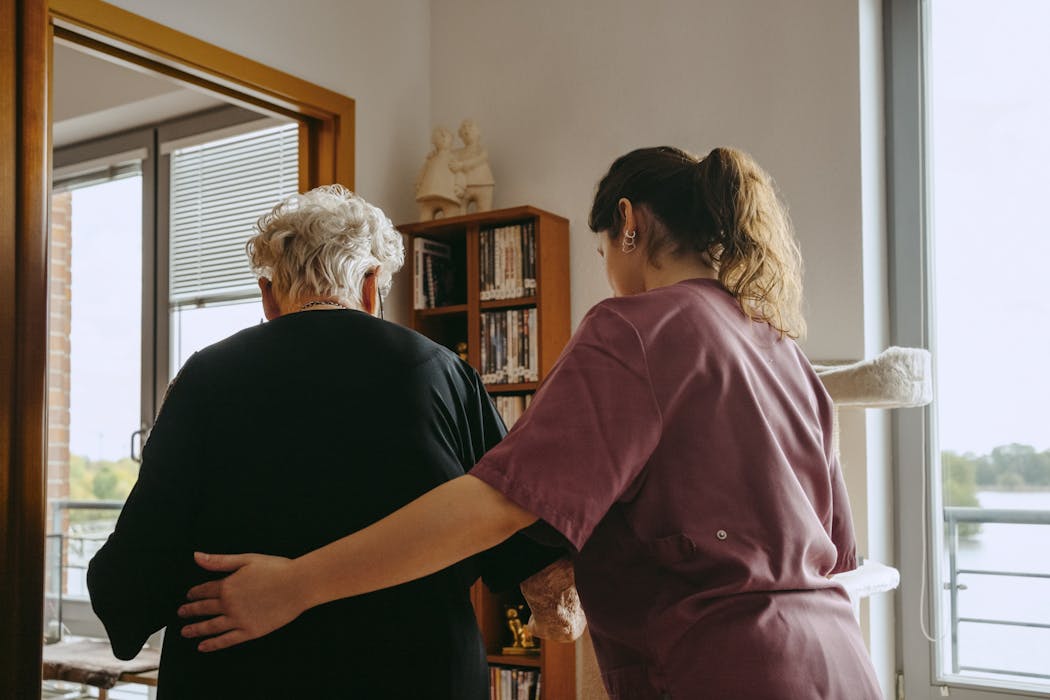Aged care at home is changing. Here’s what you’ll pay for and how to plan
- Written by Anam Bilgrami, Senior Research Fellow, Macquarie University Centre for the Health Economy, Macquarie University

A growing number of Australians want to stay at home rather than moving to a residential aged care facility when they need extra support.
But availability of home care packages has slipped far behind demand. As a result, more than 120,000 older Australians are already waiting to be assessed for aged care at home. Another 87,000 have approval but no package yet.
After a delayed start, a new Support at Home program will begin on November 1 2025. It aims to improve care at home, with more categories of support and 83,000 new places being added over the next year.
A contested component of the new system is that older Australians will be required to pay for more of their non-clinical care. This includes support for personal care such as showering, as well as everyday living costs such as cleaning, gardening and meal delivery.
Here’s what’s changing, what you will pay and how to prepare.
What’s changing?
Support at Home will have eight budget levels, called “classifications”. This is up from four package levels under the current system.
More levels should mean support that better matches needs, including for higher care needs.
You will receive quarterly budgets that can be used across three broad service groups:
1. clinical care. This includes services such as nursing, occupational therapy and physiotherapy
2. independence support. This includes personal care such as showering, getting dressed and help with hygiene, transport and social support such as assistance to participate in social interactions (in-person or online)
3. everyday living assistance. This is for cleaning, gardening, shopping assistance and meal delivery.
You can save any unused funds between quarters to cover unplanned needs. The carryover cap is 10% of your quarterly budget or A$1,000, whichever is higher.
In addition to the eight levels, there will also be three short-term, needs-based funding options:
Restorative Care Pathway. This aims to help maintain or improve independence after an illness or injury, mainly through allied health support ($6,000 for 16 weeks, or up to $12,000 if eligible for extra support)
End-of-Life Pathway. This helps older Australians remain at home in the last three months of life ($25,000 over 12 weeks)
Assistive Technology and Home Modifications scheme. This is separate funding for products, equipment and home changes. It has three tiers: low (under $500), medium (up to $2,000) and high (up to $15,000). More may be available with a prescribed need.
The Department of Health has published the list of services that Support at Home will fund, and the items covered under the Assistive Technology and Home Modifications scheme.
So what will you have to pay for?
Clinical care will be fully funded by government. You will not pay for clinical care.
If you get a Support at Home package for the first time after November 1, you will contribute to any independence support and everyday living services you use.
These new fees replace the current basic daily fee and income-tested care fee.
Your percentage contribution will depend on your income and assets and on the type of service. Everyday living services will have the highest contribution amounts.
Around 75% of Support at Home recipients will be full pensioners. If you are one, you will contribute 5% toward independence support costs and 17.5% toward everyday living.
Around 4% of recipients will be self-funded retirees without Commonwealth Seniors Health Cards. If that is you, you will contribute 50% to independence support and 80% for everyday living.
There is a lifetime cap of $130,000 on your contributions across aged care to protect people who receive care for a long time. This cap includes non-clinical contributions in residential aged care.
What if I’m already receiving a home care package?
Current Home Care Package (HCP) recipients will move across automatically. From November 1, you will shift to a “transitioned Support at Home classification” and keep the same funding you receive now.
The ‘no worse off’ rule
If you already receive a Home Care Package or were approved for one before 12 September 2024, your fees under Support at Home will be the same or lower. You will not be worse off, even if you are later re-assessed as needing a higher Support at Home classification.
If you had no fees on your Home Care Package as at September 12 2024, you will never pay fees under Support at Home. Your lifetime Home Care Package cap of $82,018, indexed, will also remain.
5 ways to plan for these changes
The new system starts on 1 November 2025. Here are some simple steps to prepare now.
1) Know how your budget will be managed
Under Support at Home, your budget will be held by Services Australia, so you won’t need to manage expenses yourself. Your provider will work with you to decide how to use it across approved services.
2) See what your monthly statement will look like
Download the official Support at Home monthly statement template so you know how budgets, services and carryover will be shown.
3) Look at some case studies
The government has published some case studies for what cost contributions could look like for:
4) Estimate your own potential out-of-pocket costs
Use My Aged Care’s Support at Home fee estimator to see likely contributions based on your income and assets, to help budget ahead of time.
5) Check indicative service prices
The Department of Health has released a summary of indicative Support at Home prices for common services such as nursing, personal care and domestic assistance. This can help you understand typical hourly rates and compare what different providers charge.
If you can’t afford to pay your fees or contribute to your aged care costs, financial hardship arrangements are available.
Authors: Anam Bilgrami, Senior Research Fellow, Macquarie University Centre for the Health Economy, Macquarie University





